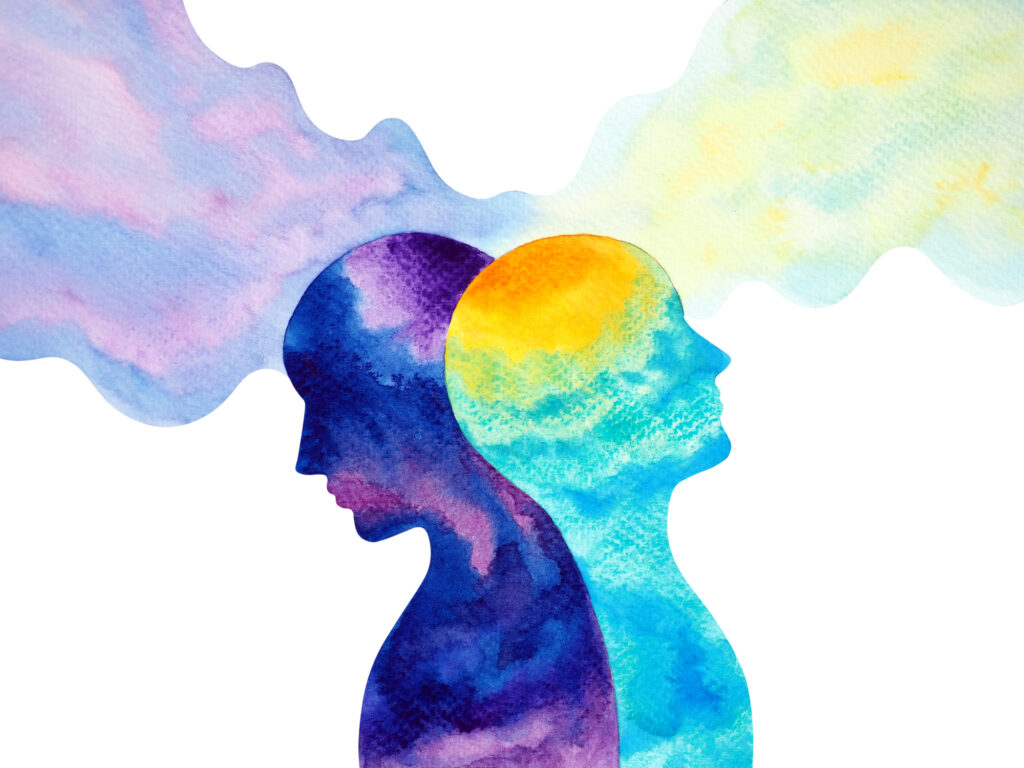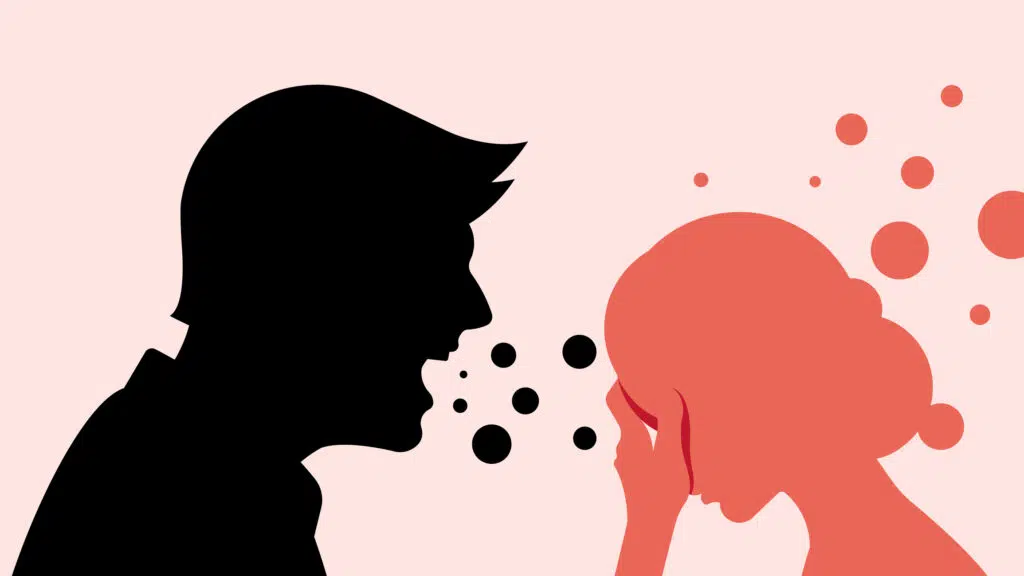A Guide to Understanding Bipolar Disorder

Bipolar disorder is a serious mental health condition that causes extreme highs and lows of mood. Someone with bipolar can experience intense emotions that swing between depression and mania. In this article, we will talk about the different types of bipolar disorder, warning signs, diagnosis, and treatment options for bipolar disorder.
What is Bipolar Disorder?
Bipolar disorder is a brain disorder characterized by extreme and intense mood swings. The intense emotional states usually last for days or weeks, called mood episodes. The low and high moods are referred to as:
- Mania (unusually elevated and extreme changes in mood, behavior, and energy)
- Hypomania (a milder version of mania)
- Depression (very sad or low mood)
When someone talks about bipolar, they usually describe these moods as states or episodes. The way someone with bipolar cycles through moods can change depending on the individual.
How Common Is Bipolar Disorder?
It’s estimated that about 2.8% of US adults 18 or over had bipolar in the last year. That’s roughly 5.7 million people. About 4.4% of adults will experience bipolar at some point. Bipolar disorder is found equally in men and women, and people of all ages, ethnicities, races, and social backgrounds can develop the illness.
Understanding the Different Types of Bipolar Disorder
Bipolar disorder is a category that includes different types of bipolar disorder:
- Bipolar 1 – at least one episode of mania that may be followed by a depressive state. You don’t need to have experienced a depressive episode to be diagnosed with bipolar 1.
- Bipolar 2 – at least one major depressive episode and one hypomanic episode. It’s normal for people with bipolar 2 to experience other mental illnesses, including anxiety disorder and substance use disorder.
- Cyclothymic disorder – at least two years of many episodes of depression and mania. A milder form of bipolar disorder where the depressive and mania symptoms are less severe than bipolar 1 and 2.
- Other Specified Bipolar and Related Disorders – when the symptoms don’t fully fit into the above categories but still cause significant distress to the individual.
So, what is the difference between bipolar 1 and bipolar 2?
As you can see, there are similar symptoms, but bipolar 1 and bipolar 2 are entirely separate diagnoses. Both bipolar 1 and 2 include episodes of depression, but the main difference is the severity of the mania episodes. Typically bipolar 1 is associated with more extreme manic episodes. Bipolar 2 is usually associated with hypomanic symptoms, a less severe type of mania. That’s not to say that bipolar 2 is a milder form of the disorder; both types can have a significant impact on daily function and quality of life.
Symptoms and Warning Signs of Bipolar Disorder
Bipolar disorder can develop at any age, but in most cases, symptoms begin to develop in adolescence and early adulthood.
Warning signs of bipolar disorder go beyond teenage moodiness or happiness. The highs are unusually happy, euphoric, outgoing, or irritable. The lows can make you feel abnormally sad, hopeless, and for some, suicidal. These mood fluctuations can affect your energy levels, sleep, behavior, relationships, and ability to function.
Manic and hypomanic symptoms can include:
- Racing thoughts
- Unusual need for less sleep
- Abnormally irritated
- Increased energy or agitation
- Easily distractible
- Poor decision-making (i.e., misuse drugs, spend money recklessly, lose social inhibitions)
- Unusually upbeat or wired
Depressive episodes can include:
- Depressed mood
- Weight changes
- Loss of energy
- Feeling worthless or guilty
- Sleep too much or too little
- Loss of interest in activities you previously enjoyed
- Suicidal thoughts
Sometimes, a person going through an extreme depressive or manic episode could experience psychosis symptoms such as hallucinations or delusions. Not everyone with bipolar will experience psychosis symptoms.
Manic episodes can completely disrupt your life and impact your daily function, while many can continue their day-to-day life through hypomanic episodes. The frequency and duration of depressive and mania episodes can vary between individuals from a few weeks to much longer.
What are the Potential Causes and Risk Factors of Bipolar Disorder?
The precise cause of bipolar disorder isn’t fully understood yet. From the research available, experts believe that several factors may be involved in bipolar disorder.
- Genetic factors – bipolar disorder seems more common in people with a first-degree relative who has bipolar.
- Brain structure – research suggests people with bipolar disorder may have a different brain structure and function from those without bipolar disorder or mental health disorders.
There are also risk factors that may increase your risk of developing the condition:
- Environmental triggers
- Family history
- Trauma
- High-stress episodes (i.e., death of a loved one)
- Substance use
Diagnosing and Screening Bipolar Disorder
Bipolar disorder can be difficult to diagnose because it shares symptoms with other mental health illnesses like depression, PTSD, borderline personality disorder, and schizophrenia. Because you don’t typically go to the doctor when you’re unusually happy, bipolar disorder can go undiagnosed.
The bipolar disorder diagnosis can include the following:
- Physical assessment – your doctor may perform lab tests and a physical exam to eliminate other medical problems that could be causing your symptoms.
- Psychiatric evaluation – a psychiatrist may talk to you about your symptoms, thoughts, and feelings and perform an assessment.
- Mood charting – you may be asked to keep track of your moods, feelings, or sleep patterns over a period of time to help determine your diagnosis.
- Bipolar disorder criteria – your psychiatrist may compare your symptoms to bipolar disorders according to the Diagnostic and Statistical Manual of Mental Disorders (DSM-5).
Treatment Options for Managing Bipolar Disorder: Medication and Therapies, and Self-Care Strategies
A psychiatrist, a medical doctor specializing in mental health, typically guides bipolar treatment. Although bipolar disorder is a lifelong illness, long-term treatment can help you manage symptoms to live a healthy and happy life. While a happy life may feel out of reach, especially if you’re recently diagnosed, it is possible. Proper treatment alongside support and self-care can help people with bipolar live fulfilling lives.
The main treatment options for bipolar are medication and talking therapies.
A number of medications could be used for bipolar disorder, depending on your symptoms and diagnosis:
- Antipsychotic medications
- Mood stabilizers
- Antidepressants
- Anti-anxiety
Medication for bipolar disorder can include one or more medications depending on your individual case. It can take time to find the right medication for you; it may require adjustments over weeks or months to find the correct dosage.
Psychotherapy or talking therapies is another important part of bipolar treatment. Psychotherapy aims to help an individual identify and change harmful thoughts and feelings. Talking therapies can also provide education, support, strategies, and skills to help people with bipolar and their families.
Self-management is another crucial part of living with bipolar. As you learn more about your triggers and how bipolar disorder impacts you, looking after your physical health and following a routine are essential. Knowing the warning signs that an episode could be coming can help you get the support you need. Getting enough sleep, exercising regularly, managing stress, and connecting with people going through the same thing as you can all be helpful.
Bipolar disorder is incredibly complex, and how it impacts individuals can vary significantly. By understanding the warning signs and speaking to your doctor, you can find the support you need for yourself or a loved one. Bipolar disorder, left untreated, can be life-threatening, and getting help is vital. If you need to speak with a mental health professional, book an appointment online to start your journey to better health. Thriving Center of Psychology provides psychiatry services for patients throughout New York and California.

Understanding Impostor Syndrome: Breaking Free from Self-Doubt
Imposter syndrome can make you feel like a fraud with no confidence in your abilities. You’re not alone; so many people feel like this. The good news is that you can break free from imposter syndrome and overcome self-doubt; here’s how.

Supporting a Loved One with Mental Illness: Practical Tips and Resources
There isn’t one perfect way to support a loved one with mental illness. How you care for someone will depend on you and the person you support. Mental illness can affect all aspects of a person, from mood to behavior. It can come as a shock when a loved one is diagnosed with a mental illness.

Is My Relationship One-Sided?
Do you feel like you’re doing all the work in a relationship? When a relationship is one-sided, it can create stress and conflict. If one partner invests more energy and effort to make the relationship work, it creates an imbalanced dynamic that can be draining in the long haul.

How To Recover From Burnout?
Manageable and short-term stress can increase alertness and give you the focus to hit a tight deadline. But left unchecked, chronic stress can result in burnout, leading to complete physical, mental, and emotional exhaustion.
